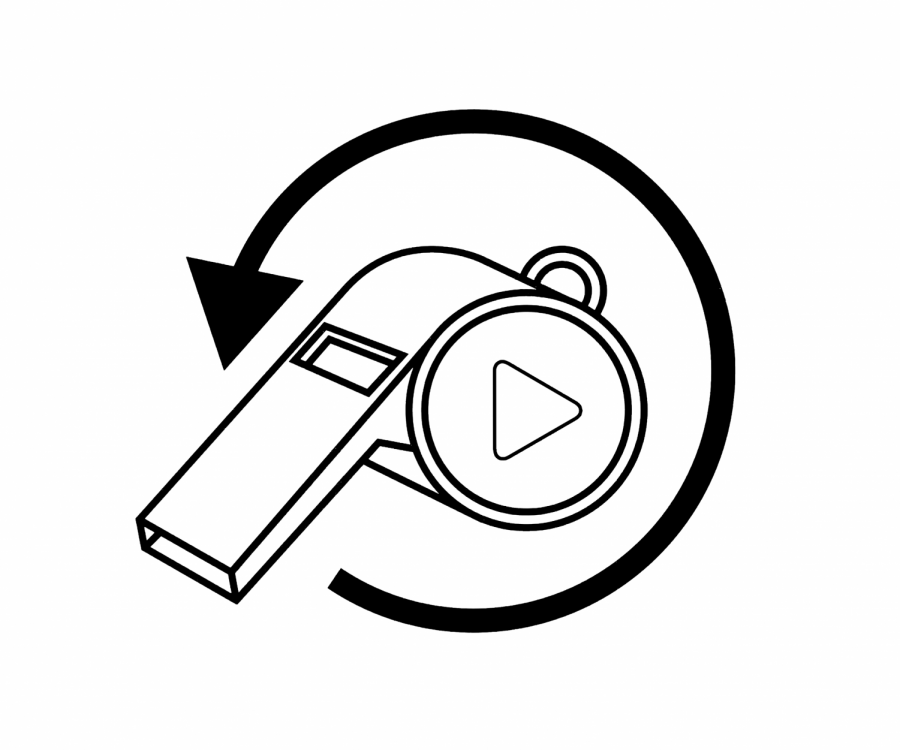Beyond the Bison: How video referees can change the game: Women’s World Cup and beyond
September 4, 2019
The video assistant referee or VAR for short, was implemented during the 2019 Women’s World Cup this summer in France. The VAR team checks for obvious errors or missed calls on the field throughout the game, communicating via headset with the head referee, who can pause play to view video replays in a sideline booth, if required. According to FIFA, VAR supports the head referee’s decision-making process on offenses leading up to a goal or penalty and red card incidents.
While VAR has been in use in prominent men’s leagues like Germany’s Bundesliga and in the 2018 Men’s World Cup, no women’s competition had ever used the new technology until this summer’s tournament. FIFA, in a controversial decision, decided to implement it for the first time on the world’s biggest women’s soccer stage. Jill Ellis, the former head coach of the U.S. women’s national team, supported the use of VAR as an attempt towards equalizing the men’s and women’s games.
In 52 tournament matches, 535 incidents were checked using VAR. While the majority were seamless communications with the referee, 33 required official VAR review, where the match had to be stopped. Of those 33 occasions, 29 decisions were changed and four were upheld. Thirteen VAR reviews led to penalty kicks; out of 26 penalty kicks awarded in the tournament – that’s one every other game – half were issued using VAR.
The average delay time for these reviews was a seemingly insignificant one minute and 33 seconds, according to FIFA’s official refereeing report from the tournament. However, some examples stood out to spectators as especially frustrating. For instance, in the U.S. match against Spain in the round of 16, a VAR official review of an awarded penalty took a full six minutes before play resumed.
Both praise and criticisms have surfaced following the debut of VAR in the women’s game. The referees made the correct call without the assistance of VAR 93.08 percent of the time, but official FIFA statistics report that with the assistance of VAR, an impressive 98.50 percent of the reviewable decisions during the tournament were correct.
However, while FIFA defended use of VAR by citing this improved accuracy, many spectators, including myself, find that its implementation delays the game significantly and disrupts the flow of play. I would argue that soccer, a beautiful game, gets a little less beautiful in contests decided by penalty kicks. Fans and players alike appreciate games with fewer stoppages, better flow, exciting buildups, and dazzling finishes – not constant whistles.
Further, officiating such a high-stakes competition is already a pressure-filled task, and there is reason for concern that VAR could alter the mindset of some referees. Perhaps some officials will be more reluctant to make controversial calls, relying on VAR to catch what they let go; perhaps others will call even the softest of fouls, knowing that their actions can now be reversed. We can easily see that the change of procedure could alter the rhythm of referees, which in turn changes the rhythm of their matches.
Plus, in contact sports like soccer, foul calls are not always black and white. A player who has played a consistently physical match might be called for a foul on a challenge that would not have been called on another player who had not been previously warned. These are examples of circumstances where subjectivity in officiating is warranted, which is remarkably difficult to account for in a video assistant program.
Perhaps implementing such video review technology could be more feasible and less controversial in non-contact sports like baseball. I have heard of both fans who fully support the idea and those who staunchly disapprove. However, in the end, one of the things that draws us to sports is their reflection of our humanity. When my family watches sports, some of our favorite moments are laughing when the referee trips over his own feet or trying to read the lips of the argument between a player and an official. Using VAR eliminates a piece of that humanity and has the potential to reduce part of the appeal of athletics. Its implementation should be limited in scope and closely monitored for its impact on the game.






















